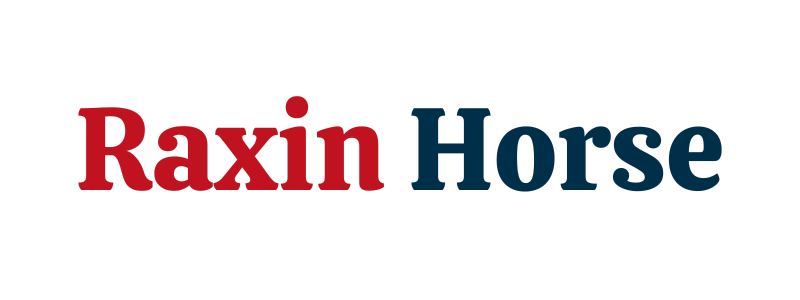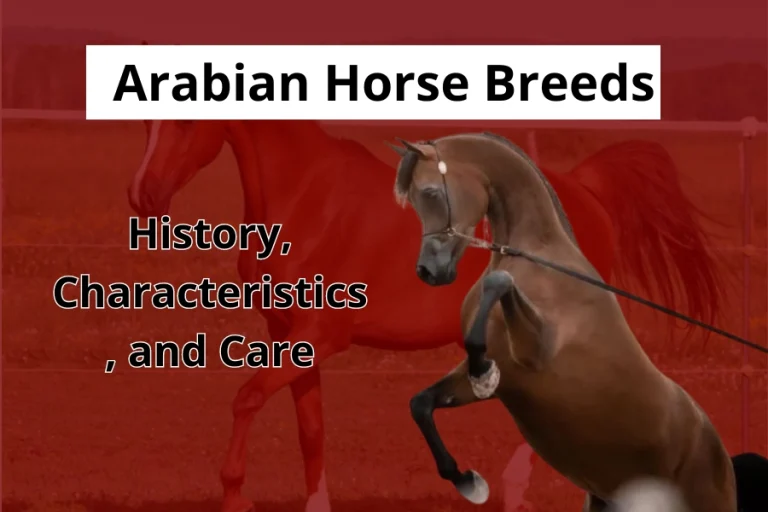Percheron vs Clydesdale Horses: A Great Comparison
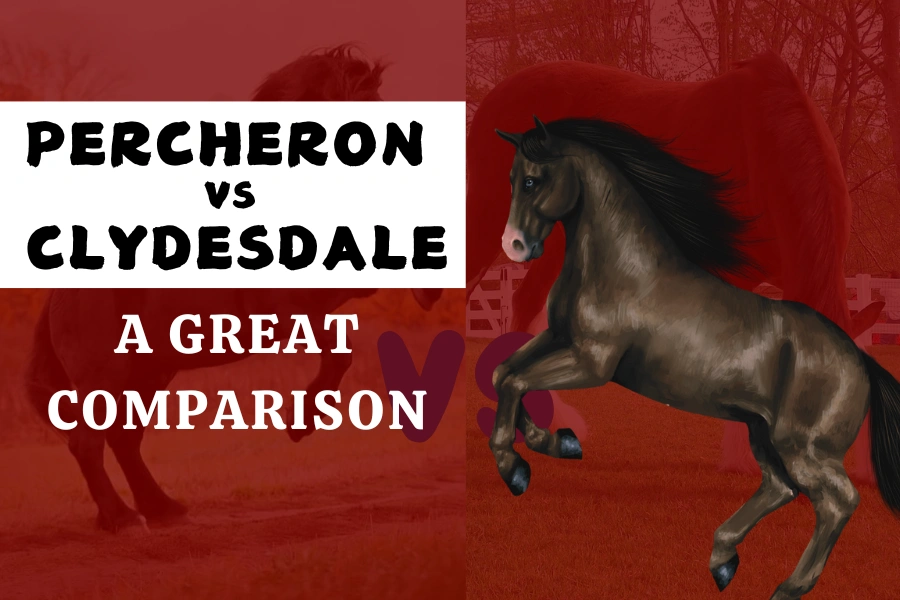
In choosing the perfect draft horse, 2 breeds generally come to mind: the Percheron and the Clydesdale. Both breeds are known to exude strength, elegance, and versatility. Those characteristics make them the favorites for various tasks, from farm jobs to parades. The Percheron breed of France is renowned for its endurance and strong constitution. The Clydesdale breed is originally from Scotland and is renowned for its fabulous appearance and tranquil nature.
In this article, we will discuss how the history, characters, and other uses of these 2 magnificent breeds are different. Thus, giving you a comprehensive comparison to understand what makes each of them special.
Percheron vs Clydesdale: What Is Similar?
If one compares the Percheron horse breed with that of Clydesdales, a lot of similarities are shared by these 2 breeds. Here are the key similarities:
- Draft Horse Type: Percheron vs Clydesdale both are draft horse breeds, bred for great strength and ability to do heavy tasks. Percheron vs Clydesdale both are draft horse breeds, bred for great strength and ability to do heavy tasks. Draft horses can be used in the agricultural sector for years. These strong and compact animals are mostly used to plow, cultivate, and harrow fields. They can also pull carts or heavy machinery full of supplies or crops. Draft horses also have a significant role in forestry, particularly in sustainable logging. They are used to pull logs out of thick forests.
- Size & Strength: Both breeds are large and of considerable strength. That’s why they are usually used for tasks that need substantial physical effort.
- Temperament: They are generally known to have a gentle and calm temperament. This makes them suitable not only for work but for public appearances and interaction as well.
- Aesthetic Appeal: Both Percheron and Clydesdale have impressive looks. While Percheron is sleek and elegant, Clydesdales appear with feathered legs and have that ‘knightly’ presence.
Percheron vs Clydesdale: What Makes Them Different?
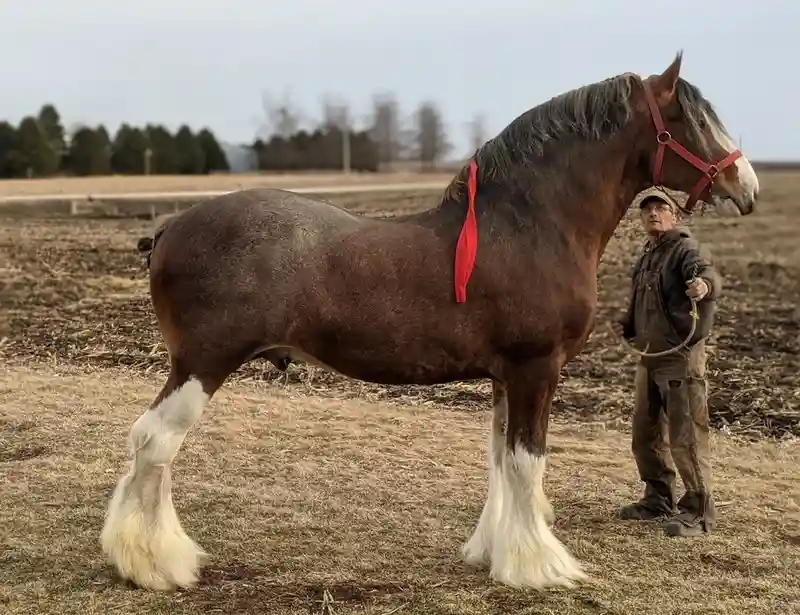
There are several differences show the characteristics and heritage of each breed. Here are the key differences:
Origin & Background
Percheron originated from the Perche district of Normandy, France, this breed was primarily developed as a war horse, and subsequently used in farm and heavy draught work. They have a history that begins in the Middle Ages.
Otherwise, Clydesdales originated from Scotland’s Clyde Valley, the time of their origination goes back to the initial decades of the 18th century. They were used for agricultural purposes like pulling hefty equipment and working on farms, particularly in the context of Scottish agriculture.
Color & Appearance
Percheron horses are typically found in gray or black color with muscular yet smooth bodies, with relatively flat chests and hindquarters. The Percheron is built with a solid frame and strong limbs. You also can find some beautiful Percheron horses in shades of sorrel, chestnut, or bay.
Clydesdale horse breeds are easily noted for thick feathering on the lower legs, while Percherons just have some on their feet. Those feathers can help to protect Clydesdale horses from water and mud on farms. They generally come in a bay with white markings on them. The neck is somewhat arched and the withers more pronounced than in the case of the Percheron. You may also find many in grey, chestnut, black, or even roan coats.
Height & Weight
The biggest horse breed in the world is the Shire horse, and the second is Clydesdales. Their height can reach 18 hands (around 72 inches) when being mature. They can weigh around 1,800 to 2,100 pounds and look slimmer than Percheron.
Generally, Percherons are slightly smaller than Clydesdales. When full-grown, they can be tall at 16 to 17 hands (64 to 68 inches) and can weigh up to 2,600 pounds. That is why Percheron horses look more muscular than Clydesdales.
Genetic Diversity
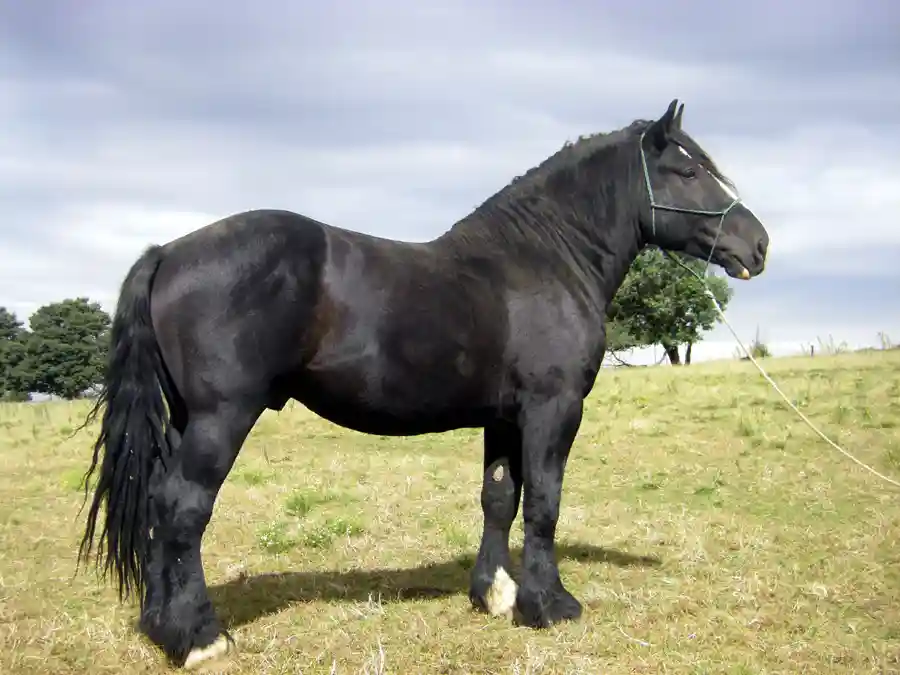
The crossing of Percheron horses with Arabian horses and other breeds has, over time, gained qualities such as endurance and refinement.
On the other hand, the Clydesdale breed standard has been more consistent throughout the years. The emphasis is on those qualities which make them useful for heavy draft and in the show ring.
Popularity & Usage
Percheron horses are known for their intelligence, readiness to please, and calm nature, the Percherons are applied both in agricultural and commercial settings—including forestry and pulling carriages. Their strength and versatility make them much in demand in equestrian sport or riding horses.
One could say that on equal measures, Clydesdales are also gentle and good-natured. But they are more popular for parades and promotional events, most famously associated with the Budweiser Clydesdales. With impressive size and striking appearance, they are an absolute favorite for ceremonial tasks.
Percheron vs Clydesdale: Which One Is Easier To Ride?
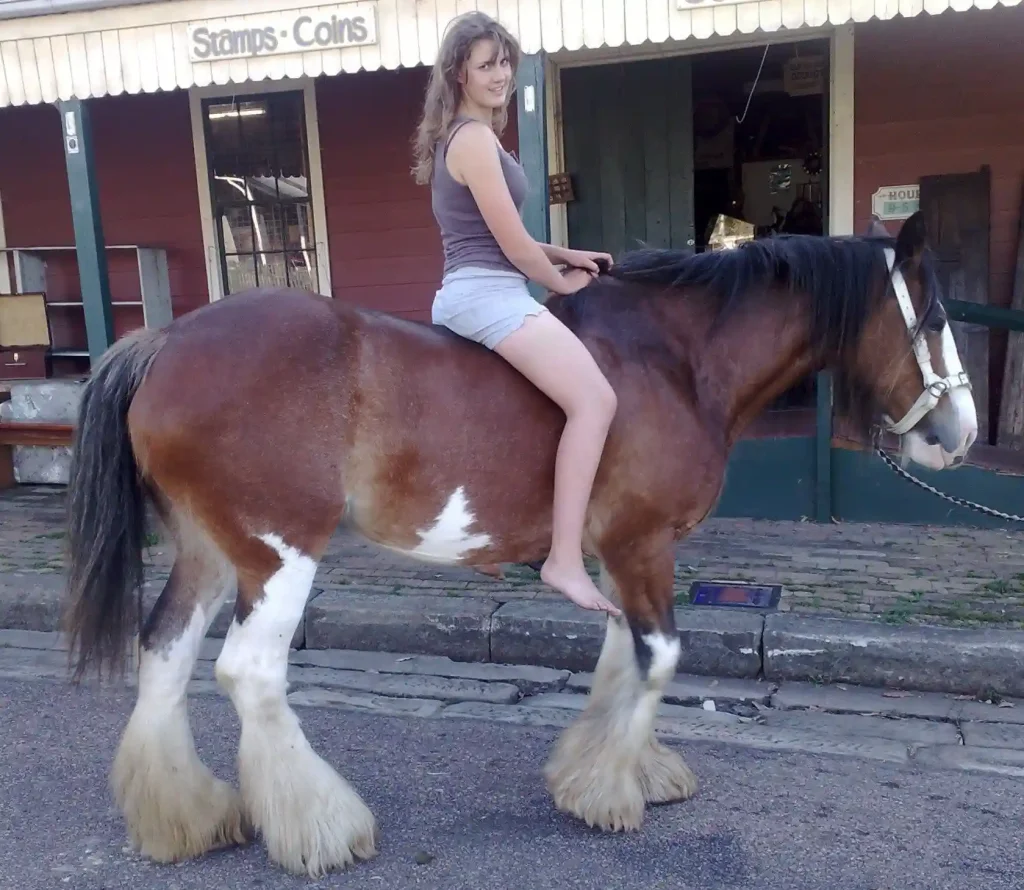
The good news is that both of these giant horse breeds are easy for you to ride. They both have easygoing temperaments và easy to train, which makes them excellent choices for horse riders.
Anyway, many horse riders said that they like Clydesdale more. These intelligent horses can please the riders and give you joy on the journey! But it doesn’t mean that Percheron horses are not good. They are the king in athleticism and can reach amazing speeds on the racetrack.
Percheron vs Clydesdale: Which Is Better For Driving?
With their big size and impressive strength, they are both excellent for driving and heavy-pulling tasks. Percheron is a more popular choice to drive during parades and pull carriages. Their majestic appearance easily catches the eyes of the crowds, making them the perfect choice for any parade.
Last Words
Percheron vs Clydesdale breed of horses, both constituting tremendous strength and beauty of their own. Although having some similarities, different physical makeup and origin will set them apart. Whether you’re drawn to the gentle giant Percheron or the majestic Clydesdale, both breeds offer a captivating blend of strength, beauty, and intelligence. In the end, which one a person goes with is based on personal preference and the specifics of their equestrian needs.
